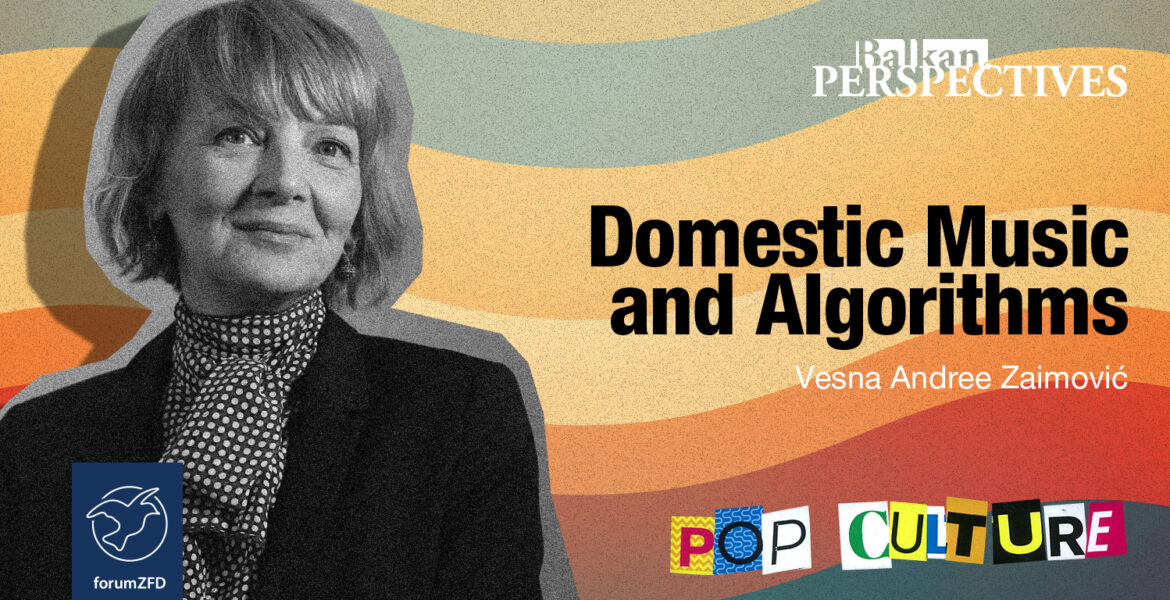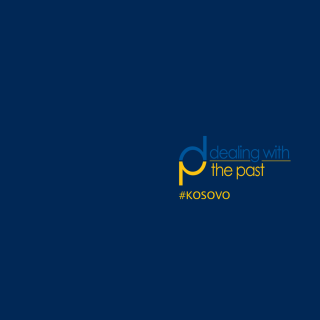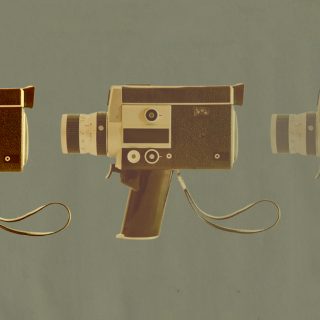Recognition of the genre “domestic music” on Internet music services like YouTube and Spotify
Balkan mix. Domestic music. Domestic rock. Domaćica. Ex-Yu hits. We find thousands of playlists with similar names on music services like YouTube or Spotify. These are collections of popular songs created by users from various areas of the former Yugoslavia or diaspora, united under the common denominator “domestic,” referring to the music they perceive as their own.
Musical affinity is a powerful means of identification and connection with a collective. Cultural products are often used to affirm belonging to a nation, as a mass collective that is heavily promoted in the countries that emerged after the breakup of Yugoslavia. Many theorists, like Wachtel, agree that “essentially important bricks in the wall of national identity undoubtedly come from the field of culture.”[i]
However, evident trends present within Internet music services provide the exact evidence that music, as an identification tool, transcends national frameworks. This goes beyond individual voluntary and conscious choices and can also be observed in the actions of algorithms that track and predict user behaviour. In practice, it works like this: services will suggest similar types of music to users who listen to a particular genre. This way, the actions of real users and artificial intelligence influence the popularization and distribution of specific genres.
In order to understand how this perception and the use of “domestic music” breaks physical borders in the Balkans and unites generations of users even born after the breakup of Yugoslavia, let’s go back a few decades in the past.
The music industry in former Yugoslavia
The average listener of pop music from former Yugoslavia would primarily refer to a genre within the wide range of popular music for their musical identity, and only secondarily to a geographic location. The legendary division into “narodnjaci” and “zabavnjaci” (“folk” and “pop”) is well known to everyone.
Before the breakup SFRY in the early 1990s, the music market stretched across its entire territory: from Slovenia in the west to Macedonia in the southeast, reaching an audience of over 22 million. During the 1970s and 1980s, the record industry flourished, with prominent record companies such as Jugoton from Zagreb, RTV Belgrade’s Production of Gramophone Records, Diskoton from Sarajevo, and others standing out. The most represented genres in the record industry could be classified into two major categories – “narodna” (folk) and “zabavna” (pop) music, within which there were numerous subcategories – from traditional and newly composed folk music, sentimental ballads (Schlager music), festival music, and the so-called family pop music, as well as a rich production of rock bands from a wider area.
Record labels did not necessarily represent only artists from their own geographical areas; based on the principle of an open market and a unified cultural space. In fact, they signed contracts with authors and performers from all parts of the country. For example, Zagreb-based Jugoton was the publisher of some of the most significant representatives of the Sarajevo scene, such as Plavi orkestar, Bijelo dugme, Zdravko Čolić, or Crvena Jabuka. The editors of this record label, including the renowned Siniša Škarica, had a “nose” for identifying potential hits in pop music.
Record labels distributed their releases through a sales network of music carriers (record and cassette stores) and an established network of radio and television channels of the former JRT (Yugoslav Radio Television). Through these channels, music reached listeners’ homes across the country. Language barriers practically did not exist, except for Slovenian, Macedonian and Albanian, whose prominent representatives were also present in the unified market (e.g., Pepel in kri, Lačni Franz, Leb i sol, Macedonian folk music).
In such an organized music market, the cultural identity of the average consumer of music goods had a wide range from which they could draw their affirmations.
Cultural identities and the strengthening of nationalism
The dissolution of former Yugoslavia occurred in the most drastic way, through war and bloodshed. The newly established political map now consists of seven states[ii] instead of one, and the once unified market has fragmented into parts. Nationalistic policies of division and the fresh traumas from the wars of the 1990s have led to an increase in tensions among the states.
What happens to the cultural identities of the inhabitants of these newly formed states? Due to complex geopolitical changes, traumas, and dominant ideologies, cultural identities undergo corrections and adaptations to new needs. History, myths, and forgotten cultural forms are invoked for assistance.
Theorists emphasize the fact that identity consciousness often relies on the difference between “us” and the “others,” where the boundary is often “arbitrary,” as Edward Said puts it: “For ‘us,’ it is enough to set those boundaries in our minds; ‘they’ become ‘they’ accordingly, and their theory as well as their mentality are marked as different from ‘ours’.” [iii]
Accordingly, cultural commodities for mass consumption, such as popular music, are being confined within the cultural boundaries of the newly formed states. The scene becomes localized and narrowed, resulting in reduced content for the users.
Global changes and the democratization of the music industry
However, while the newly established states and their institutions begin to build their cultural scenes, global changes are taking place in the music industry, leading to democratization.
Firstly, there is a radical technological transformation in the music industry: instead of the former vinyl records and cassettes, the most prevalent sound carriers in the 1990s become cheaper compact discs (CDs). In the twenty-first century, CDs gradually decline in mass usage in favour of digital services.
Secondly, with the cost reduction of broadcasting technology, there is a hyperproduction of radio and television stations. They are no longer exclusively representatives of a specific geopolitical centre but increasingly commercial channels in private ownership.
This is an important moment in which a crucial shift in music user practice occurs: due to technological advancements and the proliferation of sources from which music can be listened to, users become less dependent on the role of curators or music editors. In the previous system, music editors were backed by large institutions, but parallel to the democratization of music content, users increasingly become curators themselves. Musical choices now depend on users, their preferences, the available content, or their moods.
One should not lose sight of the fact that the cultural space of former Yugoslavia is still connected by a common language and complex interwoven relationships in a network of cultural content. In their quest to create an ideal music selection, users resort to elements they feel are their own, where they feel “at home.”
As part of the research conducted by the author for her master’s thesis in the early 2000s among members of the Bosnian diaspora, the understanding of “domestic” music went far beyond music originating from Bosnia and Herzegovina. It encompassed a range of names from Croatia and Serbia, as well as individual performers from Macedonia or Slovenia (e.g., Toše Proeski or Robert Magnifico).
Satellite TV programs, numerous radio stations, and the development of the internet have made music significantly more accessible than it was in the previous century. Interestingly, during this transitional period, popular music and genres have consolidated, resulting in less differentiation between previously established categories such as “narodna” or “zabavna” music.
Algorithms as music curators
In the 21st century, with the development of Internet services and social media platforms, the average user has access to a music library from around the world, and completely free of charge. They have complete freedom to decide on their playlists, with the subtle influence of algorithms. Instead of former music curators who shaped the music and media content according to conventions, music suggestions now come from artificial intelligence.
In creating suggestions, YouTube algorithms rely on measurable elements related to individual users and the practices of other users who share a common interest in a particular video. These algorithms assess linguistic recognisability, frequency, and duration of engagement, and similar user experiences. Similarly, the popular “Spotify radio” algorithm creates and offers each user a unique personalized list of 50 similar songs connected to a single chosen song by the user.
“Identification is constructed based on recognizable elements of shared origin or shared characteristics that an individual shares with others, a group, or an ideal, with the presence of closeness, solidarity, or loyalty to this relationship,” warns Stuart Hall. [iv]
Given that identities are not fixed categories but rather an ongoing process, it is clear that mass consumption of cultural products under the concept of “domestic music” has a strong influence on the cultural identities of the new audience.
Thus, domestic music becomes a means of identification and recognition, a language of communication, and a common denominator for the millennial and Gen Z generations whose cultural space is not limited by physical borders but extends across the internet.
Vesna Andree Zaimović, May 2023
[i] Wachtel, Andrew. (2001). Creating a Nation, Destroying a Nation: Literature and Cultural Politics in Yugoslavia.
[ii] Including Kosovo as a country that exists on the political map, but is not a member of the UN.
[iii] Said, Eward W. (2000) Orientalism.
[iv] Hall, Stuart. (1996). Questions of Cultural Identity.
Vesna Andree Zaimović is a media expert and musicologist from Sarajevo, with over 30 years of experience and achievements in traditional and new media: TV, radio, print, documentary film, web, and social networks. She is particularly recognized for her journalistic work in the field of culture, art, and human rights, for which she has received awards. She has a master’s degree in musicology in the field of sociology of music and has completed a series of additional education and training in media. She has led dozens of major projects and campaigns, drawing on extensive media experience, skills, and knowledge in communication, journalism, digital media, public relations, and advocacy. She was part of the team that founded BH Radio 1, the first public radio service in post-war Bosnia and Herzegovina. She served as the project leader and delegation head for Eurovision Song Contest twice – in 2004 and 2005. She is one of the founders of Radiosarajevo.ba, a portal that is currently among the most visited independent media outlets in Bosnia and Herzegovina, where she has been engaged as a project manager and one of the editors for 15 years. She publishes professional articles in international and domestic musicological publications.



